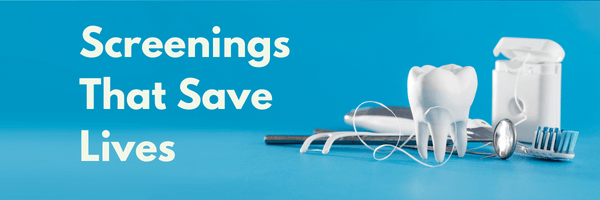
Interview with Mark Hartley of RDH Magazine.
Posted January 27, 2014
Tonya recently had the privilege of sitting down with Mark Hartley, editor of RDH Magazine, to talk about his career and RDH Magazine.
Tonya: Can you tell us about the history of RDH Magazine?
Mark Hartley: The original publisher came from a publishing family in Chicago, and he inherited Dental Student magazine, relocating it to Texas after his marriage. He started his own company, splitting his publications between the labor safety and dental professions.
In the early 1980s, he became friends with Irene Woodall, and developed a close working relationship with her. They laid the foundation for what would become RDH. He also developed a magazine for dental assistants too. Irene became the first editor of RDH, and it immediately enjoyed much success in dental hygiene. She was a very thought-provoking editor, and her own work as a dental researcher helped drive editorial planning for almost 10 years. So that’s how it started.
Tonya: How did you become involved?
Mark Hartley: Very indirectly, initially. I was a journalist who started out in hard news. A good friend of mine was a sports editor, and he asked me to switch to sportswriting. So I did. Everything went fine until I got married and had my first child. It was getting harder and harder to explain why I needed to duck out every evening to go watch a game. (laughs) At the time, my wife and I were good friends with another couple, and he was a dental student. He later became quite a successful oral surgeon in Connecticut. He was inspirational to me when the publisher started advertising for an editor, so I thought it was time for a career switch.
Ironically, the very first thing the publisher asked me to do was write a report on how he could beat Dental Economics magazine. The publisher of Dental Economics is now the current publisher of RDH, PennWell. I’m sure that white paper ended up in the landfill in record time. (laughs) But I managed to get hired back in 1985, and edited Dental Student and a magazine for young dentists called Dentist.
The publisher set up his company in part of a strip shopping mall. On one side, the staff for the dental publications set up shop, and the labor safety folks were on the other side. The dental editors were jammed in there, and we could reach out and touch each other’s desks. This was before cubicles became fashionable, so we had to look at each other all day too. So I would proofread most of the articles being published in RDH, and the other two editors helped me too.
I eventually became the supervisor of the dental editors, which involved daily interaction with the managing editor of RDH who worked with Woodall on getting together the articles.
As most dental hygiene veterans recall, Irene’s career was prematurely cut short due to a tragic illness. So we began having more involvement with the types of articles published, although Trisha O’Hehir, who was a columnist for many years, was a tremendous help in assisting us through this particular transition for RDH. PennWell acquired RDH in 1995, and I moved to Oklahoma to become the editor of RDH, and I have been the editor since 1995.
Tonya: What makes RDH distinctive as a publication for dental hygienists?
Mark Hartley: For many years, it was almost a mantra to use the word “independence” during any discussion about RDH. When we were saying that, part of it was to make it clear that we’re not published through the ADHA. Many hygienists would get their subscription to RDH and would think it was related to membership in the association, which it is not. So we would say we’re “independent.” But I think it came to also mean an independent voice for dental hygiene. I think that continues today. For example, we have a friendly collaboration with Dental Economics on many projects, but the editorial is derived separately for both audiences.
Tonya: What have been the milestones for you as the editor of RDH?
Mark Hartley: Well, for me, as the editor, it’s always going to start with the authors who are published. We were just talking about independence, and it starts with them. While sometimes we may have taken the wrong tack on a particular issue, the authors are always encouraged to approach new ideas and explore them.
We’ve had so many great ones over the last 30-plus years, and they are what makes the magazine distinctive. I am continuously impressed with the information that they share with their peers.
I wish I could say I was a natural born genius in working with these dental hygiene authors. But I’m not. For example, both Dianne Glasscoe Watterson and Anne Guignon actually had talk me into publishing their columns. Anne had an easier time of it, due to my background with the company who published articles on labor safety. The sheer number of dental hygienists who were getting hurt on the job truly ticked me off. But we had never published column on practice management issues before. On my end, I remember it was a rainy, cold day, and Dianne exchanged emails all day long about why dental hygienists needed to have a better understanding of practice management issues that affect dental offices. Fortunately, Dianne finally convinced me, because her column remains one of the most popular in the magazine.
But I have been very fortunate to work with a group of hygienists who write really, really well. As far as I know, most of them were not raised to think of someday writing the Great American novel. But I think most of them could if they wanted to.
Tonya: You mentioned sometimes the wrong type of article would be published too?
Mark Hartley: Sometimes, I think. I would have to say that most of the time it involves a manufacturer. There’s no question in my mind that dental companies have great information to share with dental hygienists. Most of the time it works. Everyone once in a while, it doesn’t. The company will get too many cooks in the kitchen or something, and trample what could have been a really good message. Fortunately, it doesn’t happen often.
Tonya: RDH has turned out to be more than just a magazine, correct?
Mark Hartley: Absolutely. I haven’t taken a vote, but I think it’s debatable on whether more hygienists have heard of the RDH Under One Roof conference or RDH magazine. PennWell is very aggressive with its digital media products. Kristine Hodsdon and Maria Perno Goldie are the editors of the RDH eVillage electronic newsletters. Both have comparable circulation to RDH, and they are much quicker and timely than the magazine. Hygienists also access information prepared for them on DentistryIQ.com. One example of that are the salary surveys.
Tonya: The salary surveys are of interest to DentalPost visitors. What have you noticed in recent years?
Mark Hartley: I don’t know if we see much fluctuation in the actual statistics. Salaries appear to have gone down in some areas. Not much, but there’s little doubt that it’s a matter of concern to hygienists in those areas. We always ask dental hygienists for their comments on career trends in their areas. We find the comments interesting because they tend to corroborate the data. Even though the agreement to closely monitor the expansion of dental hygiene schools in the future is in place, the damage may have already been done. Most readers view the surplus of dental hygienists in their communities as a very real, very tangible factor affecting the future of the careers. So they are upset, discouraged, and concerned.
A couple of things that we’re curious about for future surveys is, one, whether Obamacare will alleviate dental hygienists’ concerns about health insurance benefits. Secondly, we hear a lot about dental hygienists being unable to find full-time jobs. This year’s survey did indicate some dissatisfaction along those lines. But the percentage wasn’t astronomical in our minds. So we’ll want to monitor whether hygienists are generally content with the amount of treatment they provide on a weekly basis, or if they want more. Although we have not been tracking it statistically, a third area to watch is the feedback regarding dentists performing all hygiene treatment in a dental practice. The economy has been forcing that approach among dentists, even though practice management consultants and the dental hygiene community advised against it.
Tonya: Let’s base our last question on following up on these last comments. What do you advise dental hygienists about the job market today?
Mark Hartley: I actually do not directly advise many hygienists at all about the direction of their careers. I prefer to let the writers of RDH and the speakers at RDH Under One Roof to do the talking. But I encourage everyone to keep the faith about the dental hygiene profession. We just celebrated the 100th anniversary. But even in the last 30 years, I have seen truly remarkable changes in the tools used by dental hygienists, enabling them to provide better and more predictable treatment outcomes. There are also more career opportunities than just clinical treatment in the private practice setting. Keep the faith and find your niche. I frequently talk with dental hygienists who have patiently found the perfect opportunity for them. It takes awhile sometimes, but it does happen. This is probably true for all occupations.
We connect and educate more than 900,000 job seekers in the U.S. and Canada to build better places to work through teams that excel.





.png)




.png)
